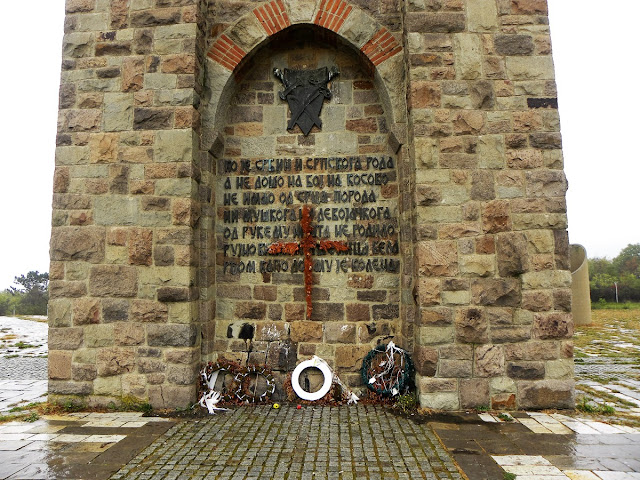Admittedly, I wasn't looking forward to traveling to Serbia. The land that begot Slobodan Milosevic, the fear-mongering politician that stoked the flames of ethnic tensions, ironically leading to the breakup of Yugoslavia, and Serbian's subsequent wars with Slovenia (1991), Croatia (1991-5) Bosnia (1992-5) and Kosovo (1998-9). Milosevic's rhetoric involving Greater Serbia and protecting ethnic Serbs outside Serbian borders was similar to Hitler's rhetoric in prior to World War II, trying to protect and unite ethnic Germans in France, Czechoslovakia and Poland, or more recently, Putin's logic with seizing the Crimea and parts of Ukraine to protect ethnic Russians.
To its credit, Serbia eventually ousted Milosevic, and handed him over to the International Criminal Tribunal for the former Yugoslavia, where he was put on trial for war crimes. (He died in prison while on trial; so despite five years of court proceedings, a verdict was never reached.)
Anyhow, to try to grasp an understanding of the Serbian point of view, I decided to check out the Serbian War Museum, housed within the walls of a huge fortress dating back to the 6th century, that overlooks the confluence of the Danube and Sava Rivers.
The museum documents defeat after defeat of Serbian armies for nearly a millennium, with their only victory being Tito's Partisans contributing to the defeat of the Nazis forces in the region. Located at a crossroads between Central Europe and Asia Minor, Serbia was often the site of battles during the Crusades and later repeated clashes between forces from the Austro-Hungarian and Ottoman Empires. I had no idea how many wars had been fought there.
The most significant battle in Serbian history is the Battle of Kosovo Field in 1389, where Prince Lazar's outnumbered forces fought valiantly, inflicting heavy casualties on the invading Turkish armies, but were ultimately defeated. (Think "The Alamo" or perhaps one of the many bloody battles of the American Civil War with a great deal of religious overtones thrown in to increase the significance of sacrifice.) Milosevic made a controversial speech at the site of the battle in 1989 referencing Serbia's sacrificial role in defending European Christendom, interpreted by many as setting the tone for justified violence against Muslims (both Kosovars and Bosniaks).
 |
| It doesn't look like the brutalities of torture practices have changed much over the centuries. |
The museum consistently portrays Serbians being victimized in the 20th century as well. Gavarilo Princip, the assassin who started World War I by killing Archduke Ferdinand and his wife in Sarajevo, is regarded as a national hero for sticking it to the Austro-Hungarian empire. Additionally the Serbs were involved in several wars with Bulgaria which occurred just before World War I that I had never heard of.
 |
| A Serbian fighter plane in World War I. |
 |
| A Serbian soldier that survived the Serbian evacuation from Albania to Corfu (similar to the British evacuation of Dunkirk in WWII). |
In a more justified cause, the museum shows evidence of Serbs becoming victims of fascist Croat collaborators during World War II. Croat forces acted as surrogates for German occupation, killing or imprisoning Serbs, Jews and Roma in concentration camps such as Jasenovac. Though this too, was used by some Serb politicians to justify its actions with regard to "getting revenge", this even carries on today with Bosnian Serb rhetoric.
 |
| Serbs killed by Croatian fascists (Ustashe) during World War II. |
The museum lacks any mention of the wars of the 1990s, other than the attacks by NATO aggressors, when Serbia was victim to aerial bombardment. It failed to mention that the attacks were in response to Serbia's continued military attacks on Kosovo.
 |
| NATO aggression |
Walking through Belgrade, it was interesting to see the city bustling with new construction, but oddly, the Ministry of Defense buildings that were damaged by NATO bombing remained untouched, possibly as a reminder of how Belgrade remains the victim.
 |
| A Ministry of Defense building which was destroyed by NATO bombers in 1999. |
 |
| Ironically, there's a huge Serbian Army recruitment billboard in front of the Ministry building that was destroyed. |























































